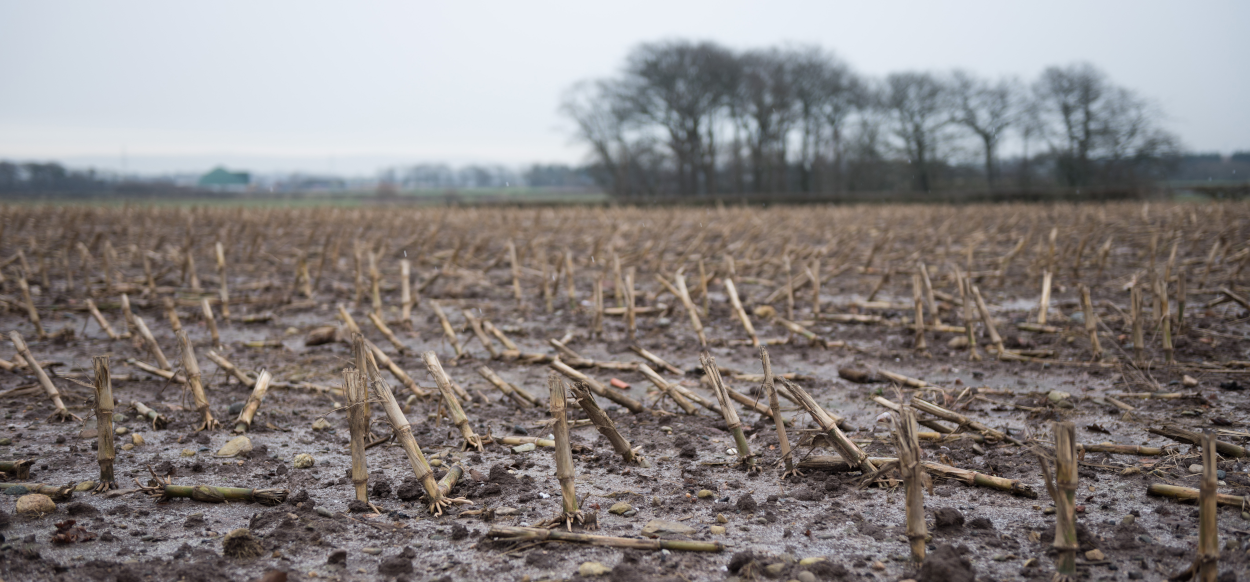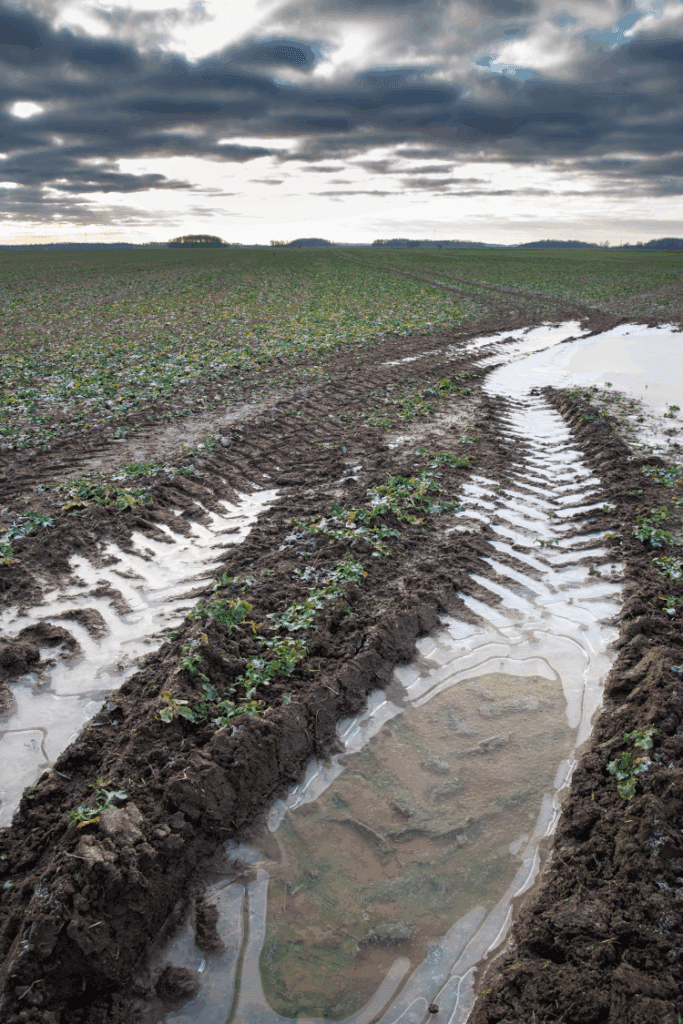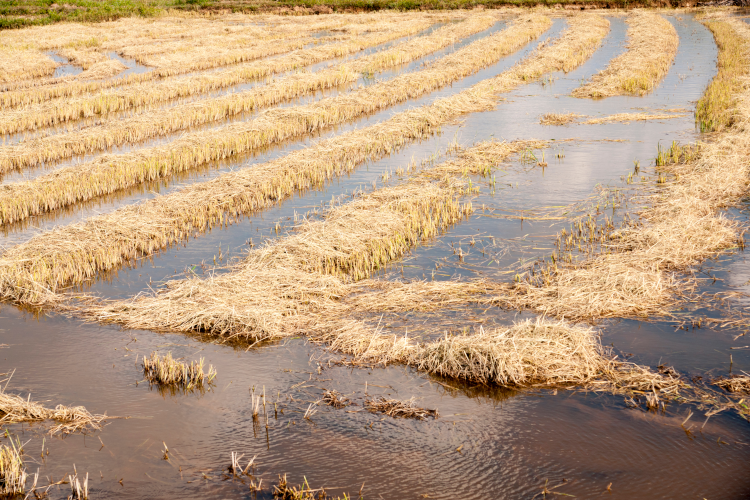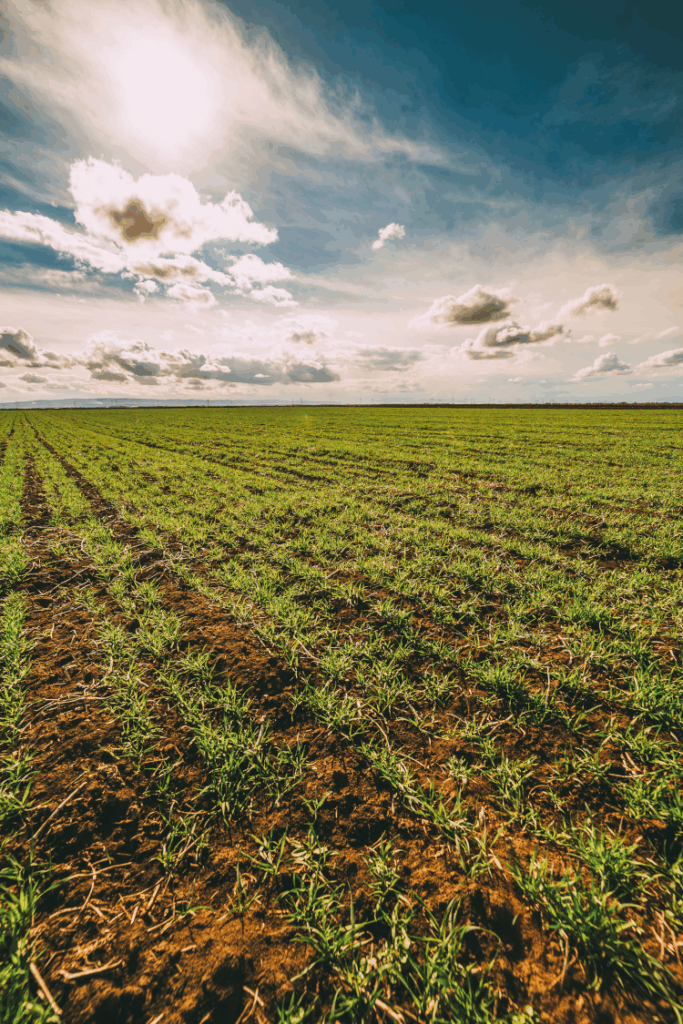
As we reflect on the past 12 months, it’s evident that because of the UK’s unique weather there are a host of challenges facing UK crops right now and taking a toll on our agricultural sector. From unpredictable frost to unrelenting rainfall and fluctuating temperatures, the challenges facing certain crops have intensified. This has significant consequences for those of us in the food service industry, where fresh produce is not just an ingredient but an integral element of our culinary offerings.
Weather Variability and Crop Impact
The last year has seen a rollercoaster of weather events, with key crops feeling the brunt of these fluctuations. Notably, salad greens, particularly lettuces, have suffered due to excessive rain and occasional frost.

The damp conditions have made them susceptible to diseases such as downy mildew, resulting in significant crop losses.
Another affected crop is the potato. The heavy rainfall during harvest led to waterlogged fields, causing tubers to rot before they could be harvested. The UK is known for its premium-quality potatoes, essential for classic dishes like fish and chips. As farms struggle to deliver this staple, chefs might have to source alternatives that lack the same texture or flavour profile.
Seasonal Fruits in Distress
While vegetables face challenges, fruits are not spared either. The unusual weather has negatively impacted the blossoming of soft fruits, such as strawberries and raspberries.
A cold snap in spring delayed flowering, resulting in a reduced yield. The timing of fruiting is crucial for many businesses. A reduced strawberry yield, for example, may affect not only dessert menus in restaurants but also the availability of berries for jams and other indulgent treats.
Moreover, the climate’s unpredictability raises concerns for more exotic crops, such as figs and grapes. The UK’s burgeoning Mediterranean-style gardens have been affected by extreme rain, potentially leading to poor fruit set or inferior quality produce. Chefs relying on local, seasonal ingredients may find their offerings compromised as these products become scarce or require sourcing from abroad, which could mean a significant increase in costs.
Affected Crops
Here’s a list of key UK crops that have been particularly impacted by the unfavourable weather conditions:
1. Lettuce and Salad Greens:
Excessive rain and high humidity have led to an increase in fungal diseases like downy mildew, resulting in reduced yields. As a staple for salads and garnishes, the shortage of quality lettuce can force chefs to alter menu offerings significantly.
2. Potatoes:
Waterlogging has been a major issue this year, especially during harvest. The UK’s famous varieties like Maris Piper are suffering from potato blight due to prolonged exposure to wet conditions, leading to rot and poor quality. This can impact everything from chips to mash, staples in many restaurants and pubs.
3. Soft Fruits:
Strawberry and raspberry farms have faced challenges, with late frosts delaying the flower set, resulting in a less abundant and sometimes poor-quality crop. For chefs who rely on fresh berries for desserts and sauces, this can mean having to adjust recipes or seek alternative sourcing.
4. Cabbage and Brassicas:
Heavy rainfall has resulted in waterlogged fields, leading to poor growth and increased disease susceptibility. Cabbages are experiencing slow growth and reduced quality, affecting dishes that rely on fresh, crunchy greens.
5. Carrots:
Along with other root vegetables, carrots have not escaped the impact of the heavy rains. Long periods of soaking have led to distorted growth and a higher incidence of rot, which can be problematic for kitchens aiming to serve fresh, seasonal vegetable dishes.
6. Onions:
Conditions conducive to mould growth have posed significant challenges to onion crops, inhibiting storage capabilities and leading to a decrease in both the quality and quantity of this essential ingredient.
7. Beans:
Both broad and runner beans have faced challenges this year, with spring planting delayed by frosts, resulting in poorer harvests. The fluctuation in weather has made consistent supply a real concern for those relying on these fresh ingredients.
8. Herbs:
Many culinary herbs thrive in stable conditions, and recent weather has fostered an environment too wet for optimal growth. Chefs may find it increasingly difficult to source fresh basil, parsley, and other herbs essential for flavouring dishes.
9. Apples and Pears:
Fruit trees have borne the brunt of erratic weather, with late frosts limiting blossom production. As a result, this season’s crop has seen lower yields and less than ideal fruit quality, affecting both dessert dishes and beverages that utilise these staples.
The Consequences for the Food Service Industry
These challenges have far-reaching consequences. A shortage of key ingredients can undermine the ability to deliver consistent menus, which can dissuade repeat business. Menu adaptability might be crucial in managing this crisis, but it’s not without its own set of complications.
Constantly changing the menu can confuse patrons and disrupt the dining experience, particularly in establishments that pride themselves on their distinctive culinary themes.
Additionally, the price volatility of certain crops can put pressure on profit margins. As supply dwindles, the cost for chefs and restaurants to procure substitutes rises, leading to potential price hikes for consumers. This situation is particularly concerning in pubs and bars, where patrons expect affordable dining options alongside their drinks. The ripple effect of increased food prices could discourage casual dining, leading to a potential dip in footfall.

Sustainability and Sourcing Local Produce
In light of these challenges, the food service industry may need to rethink its sourcing strategies. A resilient approach to ingredient supply is necessary for navigating unpredictable weather patterns. Emphasising relationships with local producers becomes crucial, not only for maintaining quality and flavour but also for securing a reliable supply chain.
Here at Four Seasons Fruiterers, we’re dedicated to connecting chefs and cooks with the best local produce available, even in challenging times. Our commitment to seasonal offerings means that despite these fluctuations, we strive to provide the freshest, most delicious ingredients to our clients. By sourcing directly from local growers who understand these weather impacts, we can provide alternative options that chefs can rely on even when faced with a reduced availability of specific crops.

Looking Ahead
As we move into the next year, it’s essential for those of us in the food service industry to remain agile and prepared for the continuing effects of climate variability on our crops.
Staying informed about seasonal reports and developing strategies for menu flexibility can help mitigate some of these challenges.
Despite the hurdles presented by the last year’s weather, opportunities exist for innovation in culinary offerings. By embracing local sourcing and championing lesser-known ingredients that are thriving despite adverse weather, chefs can keep their menus exciting and sustainable.
In conclusion, the past year’s weather has served as a thought-provoking reminder of our dependence on the land and how vulnerable our establishments can be in the face of nature’s unpredictability. Let’s face these challenges together as a community, supporting local growers and producers while delivering exceptional quality and satisfaction to our diners.




